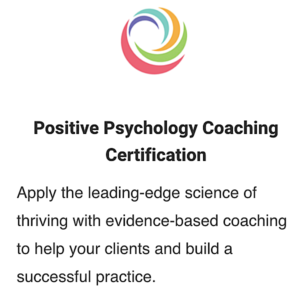by Megan McDonough
em·bod·y be an expression of or give a tangible or visible form to (an idea, quality, or feeling)
Positive Psychology is the science of happiness—of cultivating strengths, self-esteem, and optimism. Embodied positive psychology engages the body in the kinesthetic experience of living the science of flourishing. There’s an intellectual understanding of gratitude, for example. Then there’s the full-body richness of what openhearted appreciation feels like. Combine both an intellectual understanding with a mindful attention to the body, and you have the recipe for embodied positive psychology.
Engaging the whole—body and mind—integrates the rigorous science of well-being with the lived experience. Embodied Positive Psychology recognizes that well-being requires more than an intellectual understanding; it requires a multidimensional view of wholeness (which we call wholebeing).
Cognitive understanding and knowing is not the same as realizing, living, and experiencing. Embodiment physicalizes an idea, making it concrete in the here and now. As the definition explains, embodiment gives visible form to an idea. By embodying Positive Psychology, you become a walking expression of the idea. Embodied Positive Psychology is the experience of:
- • Cultivating mindfulness through the body, by focusing on the breath and anchoring our attention in the present
- • Engaging the body as part of the learning process—physically moving in order to understand an intellectual concept
- • Exploring and inquiring as much about our inner world as our outer world
- • Sharing, connecting, and networking, because the “we” helps provide context for the “me”
- • Leveraging the body’s capacity to change the mind (instead of enforcing the mind’s will upon the body).
In her book Love 2.0, researcher Barbara Fredrickson elaborates on the embodiment of positive psychology, writing, “For just as neuroscientific studies show that positive emotions open your perceptual awareness, kinematic studies … show that they also open your torso, literally expanding the (rib) cage in which your heart sits. When your mind and body are infused with good feelings, those feelings lift and expand your chest, a subtle nonverbal gesture that makes you more inviting to others, more open for connection.”
There’s an intimate link between the movement of the body and the thoughts of the mind. You could say we can cultivate a thinking body and a feeling mind. Yoga practitioners live embodiment on the mat through the awareness brought to each posture—giving intimate, detailed attention to the length of the hands all the way to fingertips, the grounding of our feet on the earth, the lift of the top of the head to the sky. Postures inform us about what it feels like to inhabit every part of our physical being. We fill the container of our own skin with our mind’s eye. The more we include the whole of our body in the yoga experience, the richer the practice.
Philosophers, psychologists, and even artificial-intelligence researchers who study the embodied mind contend that the body shapes cognition. Or, to put it more simply, the body shapes what we think and how we feel—and, by extension, how we act.
This article was originally published in the Spring 2016 issue of the Kripalu catalog.
Learn more from Megan McDonough in The Certificate in Positive Psychology.
Megan McDonough is CEO of Wholebeing Institute, an educational organization co-founded with Dr. Tal Ben-Shahar. WBI is committed to spreading ideas and practices that can help individuals and groups live life to its fullest.
Click here for a course listing.







Hello Megan – I thoroughly enjoyed reading your thoughts here. I’m a very visual guy to begin with. You so elegantly shared what it means, and how it feels to live with positivity and love. A very nice experience. Thank you!
You are so welcome, David. I appreciate your comments!